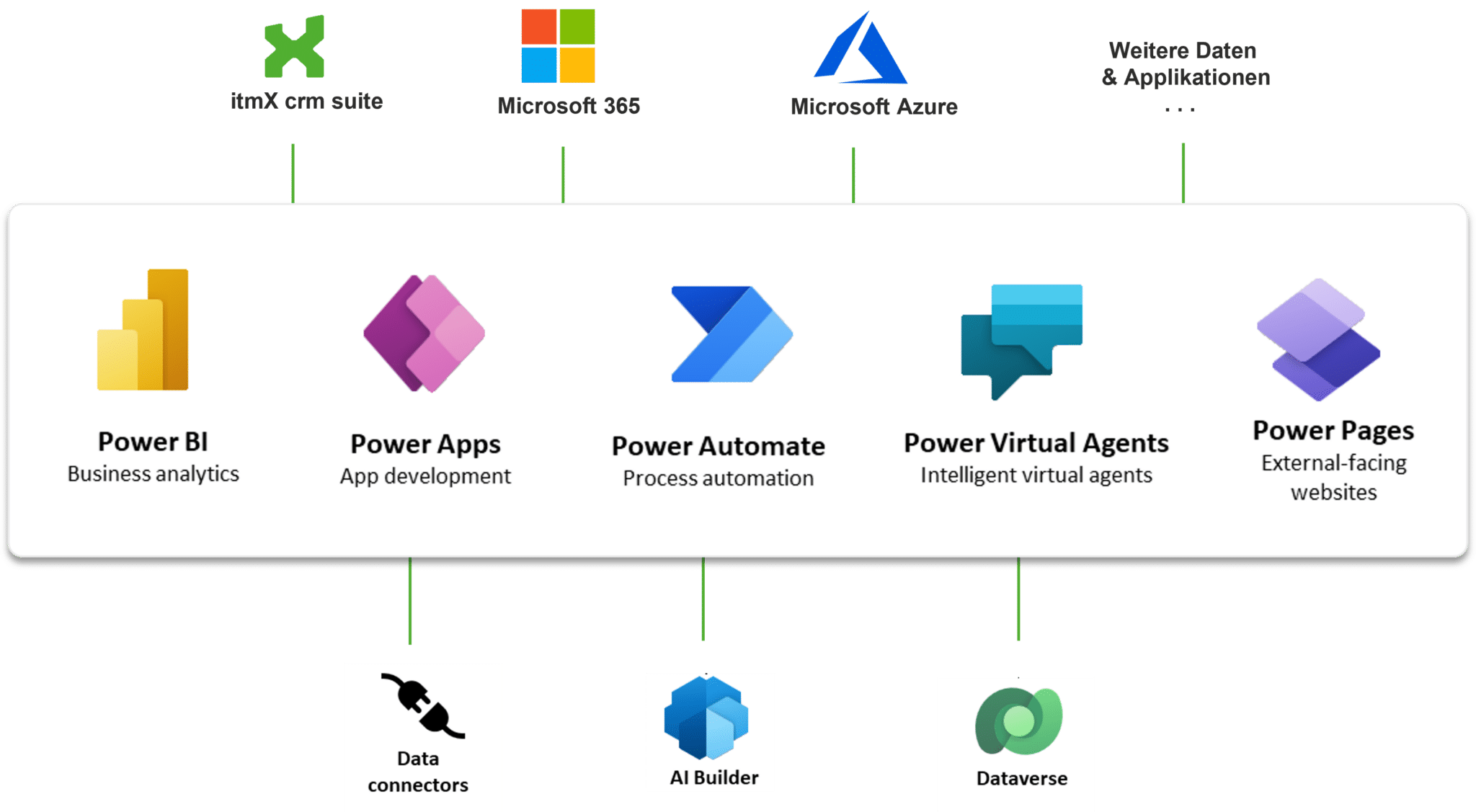Microsoft Power-Platform: How to get a successful start?
In today’s business world, where agility and efficiency are key and companies rely more and more on digital solutions, the Microsoft Power Platform has become a valuable tool. With its tools and services, the low-code / no-code platform empowers companies to create customized applications, automate business processes and analyze data in an intelligent way.

The Microsoft Power Platform: a revolutionary solution for digital transformation
The Microsoft Power Platform has established itself as a revolutionary solution for digital transformation. With its various components Power BI, Power Automate, Power Apps, Power Virtual Agents and Power Pages, it offers a diverse range of tools that help companies optimize their processes and make them more efficient.
However, before we go into implementation scenarios, integrations and use cases, let’s first take a closer look at the individual components:
The strength of the Microsoft Power Platform is that it offers a low-code/no-code development environment that enables even people without extensive programming skills to create applications and workflows. This enables employees from different departments to develop their own solutions and thus increase the efficiency and productivity of the entire company. In short, the Microsoft Power Platform makes digital transformation accessible to companies of all sizes and in all industries, enabling them to optimize their business processes and remain competitive.
A strategic approach is important when implementing the Microsoft Power Platform
However, in order to get the most out of the Microsoft Power Platform tools, a strategic approach is necessary. If everyone suddenly starts building reports or applications without any rhyme or reason, this tends to have a negative impact on efficiency. Companies should therefore think about governance concepts in advance to ensure uniform use of the platform. It is important to establish naming conventions, security policies and responsibilities to avoid proliferation and inefficiencies.
Another important aspect is employee training and education. Dedicated individuals should be responsible for developing and maintaining applications, workflows and dashboards. This can be either within the IT department or directly within the business department. Depending on where the expertise can best be leveraged.
Once the group of people is defined, the next goal is to think about what goals should be achieved with the Power Platform applications. Strategic goals and clear project planning and structuring are critical to maintaining an overview and ensuring consistent and effective use of the platform.
Seamless integration of Microsoft Power Platform and SAP: Increased efficiency through closed process loop
Another topic that must not be overlooked under any circumstances is the integration possibilities of the tools with other systems such as ERP. This is because the interaction of the Microsoft Power Platform and ERP enables companies to create a closed process cycle. Thanks to the linking of the two platforms, users can switch seamlessly between applications without losing track. For example, data from the SAP system can be processed and visualized with Power Automate and Power Apps. Standard connectors provide access to SAP tables and RFC modules, while Power BI can tap into SAP’s data warehouse to visualize information. In addition, it is possible to create custom Web services in the SAP system and use them via the Power platform. This integration creates a closed process loop that optimizes the flow of information between the two platforms and enables efficient collaboration. The combination of Microsoft Power Platform and SAP opens up new opportunities for companies to increase efficiency and optimize processes.
In addition, it is important to carefully set up the technical setup and ensure that the platform meets the company’s individual requirements. Through thorough preparation and a strategic approach, companies can achieve a smooth entry into the Microsoft Power Platform and the benefits of digital transformation can be fully exploited.
About the author


